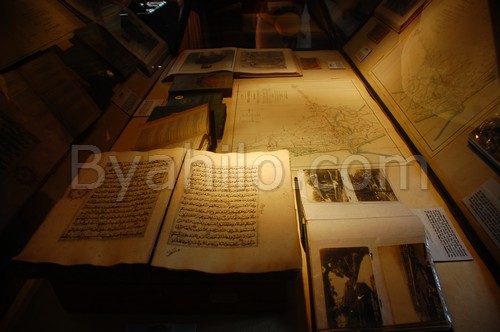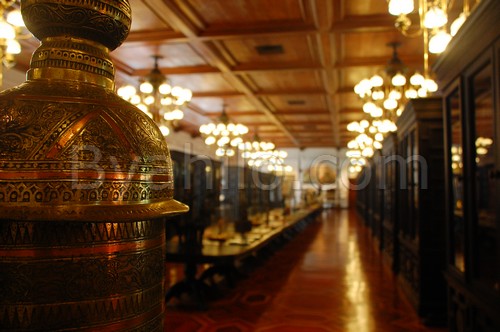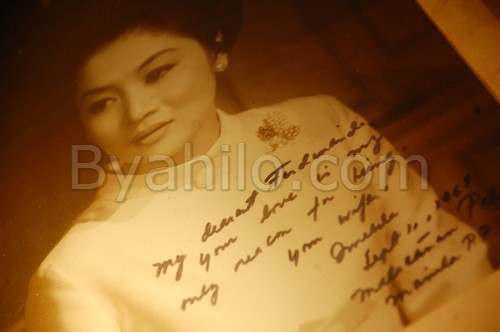Penman for Monday, July 27, 2009

I HAD a wonderful time in Singapore last week with my fellow guest writers at Lit Up: the Singapore
Young Writers Festival. No, I don’t think I can be called a “young writer” any longer—I crossed that threshold at least 20 years ago—but I was invited to the festival as a resource person and keynote speaker, to help in firing up the imagination of young Singaporeans (by which I mean high schoolers and junior college students around the ages of 13 to 19).
The festival is being held under the auspices of Word Forward, a kind of literary NGO that’s made it its mission to promote writing, reading, performing, and creative thinking among young Singaporeans, with support from the National Arts Council. I’d met Word Forward program director Chris Mooney-Singh and his gracious wife (and festival director) Savinder Kaur at a British Council seminar in Singapore early last year, so this was a pleasant reunion. This time, we were joined by a group of highly accomplished writers and performance artists from around the region. They included:
David Oliveira, a poet originally from California and now based in Cambodia, the founder of the Santa Barbara Poetry Series and founding editor of
Solo, an award-winning poetry journal;
Paul Kooperman, an Australian screenwriter who’s published two books on screenwriting and whose work has taken him to Hollywood;
Arianna Pozzuoli, a Canadian poet now based in Singapore, winner of various poetry slam competitions in the US and Canada;
Arka Mukhopadhyay, an Indian poet, director, actor, teacher, and performance artist whose work involves theater in conflict and bringing Shakespeare to children from all backgrounds;
George Wielgus, a UK-born, Malaysia-based community arts worker, writer, and spoken-word artist who works with marginalized groups; and
Jacyntha England, a Canadian educator, writer, and theater artist whose work has taken her as far as Kazakhstan, Tanzania, and Romania.
It’s always a privilege—and it gives me a huge charge—to share the company of brilliant artists dedicated to their craft, and last week’s exposure to these people taught me as much as it did our young audiences. We spent most of the week moving from one school to another—giving lectures, readings, performances, and workshops to hundreds of children, most of whom had never seen or heard a live writer before.
As in many other places around the world—including the Philippines—literature is becoming something of an endangered species on the Singaporean curriculum. It’s there, but it doesn’t figure as prominently in people’s minds as it used to. Most students see literature as something to study so they can pass exams that will qualify them for college—Singaporean exams for the General Certificate of Education or GCE include a literature component featuring the infamous “unseen poem,” a presumably obscure, sometimes local, piece of poetry that examinees will need to analyze well enough to pass and to move on to the great Singaporean future of academic and professional success and prosperity. When young people see Shakespeare and even Singaporean literary icons as Edwin Thumboo as exam topics and hurdles on the road to personal accomplishment, some unpleasant results arise: imaginations freeze, wonderment goes dry, and an aversion rather than a desire for literature develops.
So we were brought in to work with our Singaporean counterparts in reminding our young audiences that literature and creative writing can be fun, exciting, invigorating, and liberating. Every day last week, we visited one or two schools, speaking and performing before several classes in each school, and giving tutorials to more advanced students who showed us their work. I couldn’t help remarking that every school we went to was immaculately clean and smashingly modern, with every conceivable external need provided for, so anything else we could do for the kids could only work on the level of their minds.
On the whole, we found our young listeners to be eager but shy; quite a few were highly talented, clearly attuned to a global youth culture that favors, for example, epic fantasy of the
Lord of the Rings variety and Japanese
anime. Some works we came across were extremely moving, such as a young girl’s love poem for her cancer-stricken mother.
At the same time, I felt it necessary to remind them that it was all right, if not better, to begin writing about themselves, their place, and their time. One work I thought to be particularly brilliant, a Poe-ish tale involving an old woman, a black cat, and unexpected fortune, was made even more curious for me by the fact that one character was identified as “Daniel MacPherson,” or some such Western name. While recognizing the easy possibility that post-colonial Singapore could still host a few MacPhersons in its population, I asked the girl who wrote the story why she chose that name.
“I thought it would make the story more universal, give it greater appeal,” she answered in so many words. “I think your story will be stronger if you gave this character a local name,” I said. “We already know of many great British and American writers. You should want to become a great Singaporean writer, writing about your people.” Another interesting encounter was with a boy whose story plot involved a young Singaporean who had everything but was deeply unhappy; not even the best psychologists could tell why. The writer himself hadn’t worked out the reason why—“and that’s for you to find out,” I told him, feeling that he had latched on to something very important.
Overall, we had a grand time with the children and with our sessions at the Arts House, Singapore’s old Parliament building. I’d been to Singapore several times before but had never really interacted this closely with its people and its artists. Naturally, I brought Beng along, having resolved to see as much of the world as we can together before our knees crumble. It was her first time in Singapore beyond stopovers at Changi airport, so the city and its dazzling cleanliness—and the joys of Mustafa and Little India—were a revelation for her.
We spent a lovely evening out with a Filipino friend, the architect Jun Tenza, whose firm has built some of Singapore’s best-known landmarks, and his daughter Kath and son-in-law Paul. After a seafood dinner at East Coast Park, our hosts drove us up to Mount Faber, a lookout from where Singapore’s night skyline can be best viewed.
But rather than just dwell on the beauty of the scenery, Paul and I got around to talking about the few Singaporeans who fall through the cracks of this provident society. Paul teaches new media in an arts teachers’ school and, in his mid-30s, belongs to a generation that has both enjoyed the benefits but has also begun to worry about the implications of living in a place that seems to have everything and where everything seems to be going right.
It’s a question that Singapore’s writers and artists—more than its politicians and businessmen—will have to explore and to answer, and I hope that our brief visit contributed to its contemplation.







